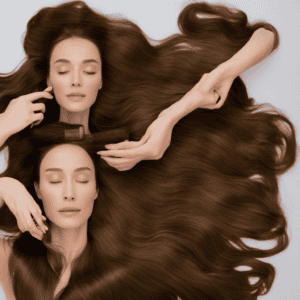To get the most out of batana oil on damaged hair, start with a pre-treatment to open up the cuticle, then apply a quarter-sized dollop of oil, avoiding overwhelming your hair. Focus on the ends, gently massaging the oil into the last two to three inches of hair to lock in moisture and promote split end repair. You can also mix batana oil with other oils for customized benefits, but be cautious not to overuse it, as this can lead to greasy, weighed-down hair. By following these tips, you’ll be on your way to repairing and nourishing your damaged locks – and you’ll discover even more secrets to unlocking batana oil’s full potential.
Start With a Pre-Treatment
Before applying batana oil to your damaged hair, start by giving your locks a pre-treatment to open up the cuticle and allow for maximum absorption. This step is crucial in preparing your hair for the nourishing benefits of batana oil. You can use a hair mask or a deep conditioning treatment to achieve this. Leave it on for about 30 minutes to an hour before rinsing. This will help to break down the cuticle and create a pathway for the batana oil to penetrate deeper into your hair shaft.
After your pre-treatment, your hair is now ready to absorb the goodness of batana oil. You can mix it with other oil blends to create a customized blend that suits your hair type. Apply the oil blend to your hair, focusing on the ends, which tend to be the driest. Massage it in thoroughly, and then cover your hair with a warm towel to help the oil absorb even further. With your hair now fully prepared, the batana oil can work its magic to repair and restore your damaged locks.
Use the Right Amount
When applying batana oil to your damaged hair, use a small amount, about a quarter-sized dollop, to avoid overwhelming your locks with too much oil. This is crucial because too much oil can weigh your hair down, leading to a greasy, limp look. Using the right amount will allow for optimal oil absorption, which is essential for repairing and nourishing your hair.
Hair porosity plays a significant role in determining how much oil your hair can absorb. If you have low porosity hair, it’s essential to use an even smaller amount of oil to avoid clogging your hair cuticles. On the other hand, if you have high porosity hair, you may need to use a bit more oil to achieve the desired level of moisture and hydration. By using the right amount of batana oil, you’ll be able to reap its benefits without overwhelming your hair. Remember, it’s always better to start with a small amount and gradually increase as needed.
Focus on the Ends
By focusing on the ends of your hair, you’ll target the most damaged areas, which tend to be the oldest and driest parts of your locks. This is where split ends and breakage often occur, so it’s essential to give them some extra TLC.
When applying Batana oil, concentrate on the last two to three inches of your hair, where the damage is most pronounced. Massage the oil into the ends gently, working your way up towards the roots. This will help to lock in moisture, nourish the hair, and promote split end repair.
Regular hair trimming can also help to prevent split ends and breakage. By trimming your hair regularly, you’ll remove damaged ends and prevent further splitting. This, combined with the nourishing properties of Batana oil, will help to keep your hair healthy and strong.
Mix With Other Oils Wisely
As you explore the benefits of Batana oil, consider blending it with other oils to create a customized cocktail that addresses your specific hair concerns. By mixing Batana oil with other oils, you can amplify its benefits and create a treatment that targets your hair’s unique needs.
When blending, pay attention to blending ratios – a general rule of thumb is to start with a small amount of Batana oil (about 20-30%) and mix it with other oils that complement its properties.
For example, you can blend Batana oil with coconut oil to enhance moisturizing properties or with argan oil to add shine and softness. Oil layering is also an effective technique, where you apply a small amount of Batana oil to the ends of your hair, followed by a layer of another oil to lock in moisture and nourishment.
Don’t Overdo It
Moderation is key when using Batana oil on damaged hair, and it’s essential that you don’t overdo it, as excessive use can lead to a greasy, weighed-down mess. One of the most common hair care mistakes is using too much oil, thinking that more is better. However, this can actually hinder the oil’s absorption rates, causing it to sit on the surface of your hair rather than penetrating deeply.
When you overuse Batana oil, you’re likely to end up with a residue that weighs your hair down, making it look limp and lifeless. Instead, start with a small amount and gradually increase as needed. This will allow you to reap the benefits of the oil without overwhelming your hair. Remember, it’s better to err on the side of caution and under-use the oil than to overdo it and end up with a hair care disaster.
Conclusion
You’ve made it to the end of this batana oil journey! By following these 5 tips, you’re well on your way to repairing and revitalizing your damaged hair.
Remember, patience is key – don’t expect overnight miracles, but with consistent use, you’ll start to notice a significant difference.
So, go ahead, give your hair the TLC it deserves, and enjoy the transformative power of batana oil!






